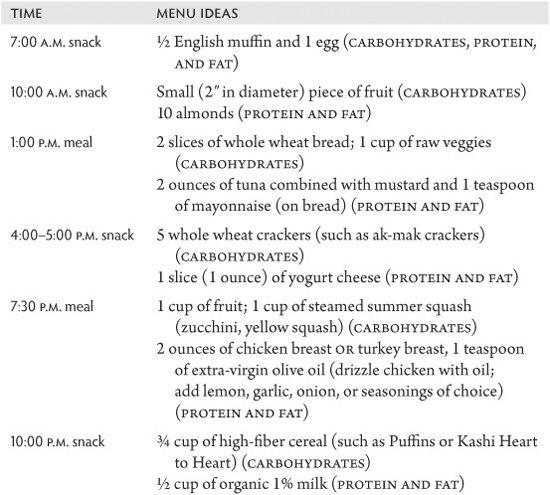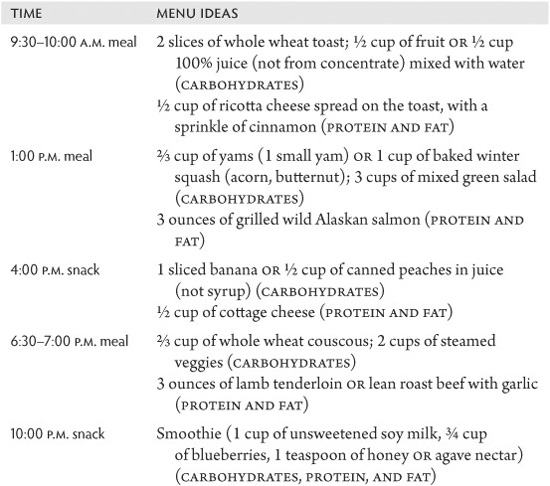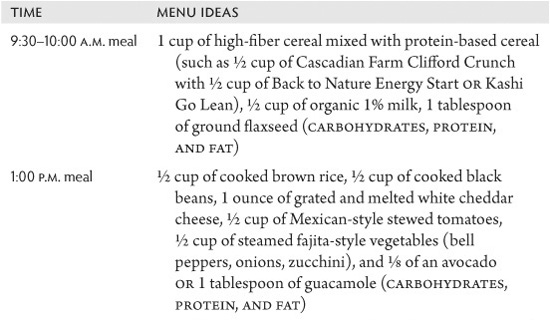Read The 200 SuperFoods That Will Save Your Life Online
Authors: Deborah Klein
The 200 SuperFoods That Will Save Your Life (57 page)

The human body is approximately 65 percent water, and it takes an average of 64 ounces of water or other liquids to replenish the water that our bodies lose each day. Not all of that water has to come from drinks, however. Many foods are also a good source of waterâfruits and vegetables, for instance, are 80 to 95 percent water; meats are made up of 50 percent water; and grains, such as oats and rice, can have as much as 35 percent water.
By the time you feel thirsty, you're already dehydrated. If you make a point of drinking enough water, you may find yourself feeling more alert and energetic. Keeping well hydrated also helps keep you lean. Research shows that drinking water before meals can reduce the number of calories you consume by about 13 percent.
It's especially important to replenish the fluids that are lost due to exercise.
Before exercise: Drink about 16 ounces of cool water about 15 minutes before exerciseâstay away from ice cold water.
During exercise: Drink 5 to 8 ounces of water every 15 minutes.
After exercise: Drink 16 ounces of water after exercise for every pound of body weight lost. Replace important electrolytesâsodium, potassium, chloride, and magnesiumâby eating foods such as low-fat dairy products, oranges, grapefruit, and bananas.
If your exercise session lasts for more than an hour and a half, sports drinks are recommended during exercise to replenish your body fluids. Choose one that has 5 to 8 percent carbohydrate solution, or 50 to 80 calories per eight ounces. Sports drinks that contain fewer than 40 calories per eight ounces are not effective. Any beverage that contains more than 10 percent carbohydrate solution or over 100 calories per eight ounces is not recommended, because it will take longer to be absorbed and could cause abdominal cramping, nausea, bloating, and diarrhea if consumed during exercise.
You can make a sports drink that has all the benefits of those available commercially, but without the artificial colors, sweeteners, and flavors. Dissolve a tablespoon of sugar and a pinch of salt in one tablespoon of 100% orange juice (or two tablespoons of lemon juice), and then add seven and a half ounces of cold water.
Sample Livits and Meal Plan Helper
Quick and Tasty Livits
To make meal planning easier and help you incorporate as many of the 200 Super-Foods into your diet as possible, we provide five sample daily Livit menus for each of four diets based on calorie intake: 1200, 1500, 1800, and 2000 calories per day. A
My Livit!
chart for your personal use follows page 332.
The following five Livits are based on a diet of 1200 calories a day and follow the standard for nutrient sources as follows: 50 percent from carbohydrates, 20 percent from protein, and 30 percent from fat.
Sample 1200 Calorie Livit #1

Sample 1200 Calorie Livit #2

Sample 1200 Calorie Livit #3

Sample 1200 Calorie Livit #4


Sample 1200 Calorie Livit #5

The following five Livits are based on a diet of 1500 calories a day and follow the standard for nutrient sources as follows: 50 percent from carbohydrates, 20 percent from protein, and 30 percent from fat.
Sample 1500 Calorie Livit #1

Sample 1500 Calorie Livit #2

Sample 1500 Calorie Livit #3

Sample 1500 Calorie Livit #4

Sample 1500 Calorie Livit #5

